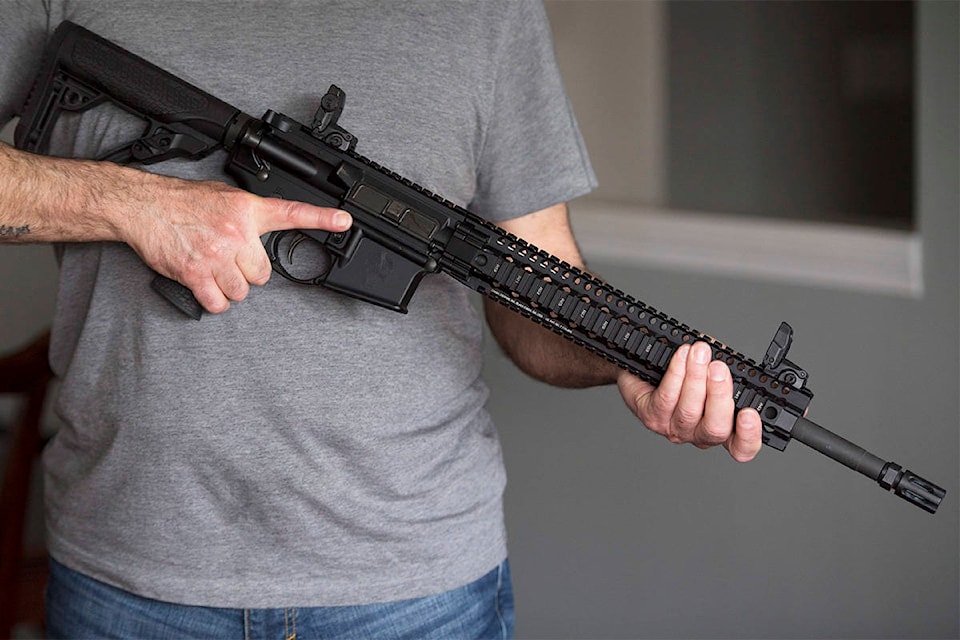The federal government’s “assault-style” firearm ban was passed as a cabinet order on May 1.
Larry Bagnell, the Yukon’s MP, spoke with the News on May 4 regarding this policy.
The order bans all assault-style firearms, meaning semi-automatic rifles with sustained rapid-fire capability, with a tactical military design, with high magazine capacity and present in large numbers in the Canadian market.
As for the military design, Bagnell said this would be the firearm design for long guns during and after the Second World War.
He echoed Prime Minister Justin Trudeau’s comments that these types of weapons were created to kill people.
“Those weapons that were created by the military to kill as many as possible in the shortest time possible, which is the intent,” Bagnell said.
Bagnell explained that while he owns a firearm for hunting, he is not well versed enough to speak on the technicalities of why some firearms were subject to the ban while others, which have the same calibre and muzzle velocity are not.
He said he is trying to get some feedback on this list of banned guns to see if there are some that don’t follow the definition.
Bagnell stated that a lot of the banned guns are not used for hunting nor were they designed for that purpose, adding that anyone can still go hunting.
“I’m happy people can carry on hunting,” Bagnell said.
He did not have any details on a gun buy-back program, saying he wants feedback from people on how it should work.
There is a possibility of owners getting their gun grandfathered, which would allow them to be kept with the condition the gun could never again be used.
The grandfather policy still needs to be worked out.
“It would depend how many people would then chose to sell their guns back to the government,” Bagnell said. “It would be hard to put a number of that.”
He explained that this is a change in existing regulations, thus it did not have to go through the House of Commons and was passed through cabinet.
“That’s just standard procedure,” Bagnell said.
He added this change in firearm regulation should not come as a surprise, since it was a campaign promise in the 2019 federal election. This means, he said, there was a national debate on gun control.
Bagnell also said that he campaigned on gun control personally. He acknowledged that it is a divisive issue both nationally and territorially. He understands there will be Yukoners that are against this order but there are also those that are in favour.
The MP was unable to say if this order was a response to the April 18 and 19 shootings across Nova Scotia.
“I can’t speak to that,” Bagnell said.
He said he didn’t feel this cabinet order would have prevented the shooting.
“I doubt they would have,” Bagnell said.
He explained the intent is to reduce the chance of these weapons being used in a crime by reducing circulation and that this order does not focus on preventing illegal guns from entering the country.
This cabinet order covers taking these guns out of circulation on the legal market.
He said there has been gun violence and drug violence in the territory. This has some Yukoners worried and he feels something needs to be done.
“We need to do everything we can to prevent that,” Bagnell said.
Steve Hahn is the Regional Field Officer Coordinator for the Canadian Coalition for Firearms Rights in the North. He previously served in the Canadian Forces and is a sports shooter as well as hunter.
He spoke with the News on May 5 to give his reaction.
He was not surprised this materialized, due to it being a campaign issue, but he does have concerns with the new regulations.
One of the concerns is the definition of the terms like “assault-style” firearm.
He said the devil is in the details and feels the government has missed the mark in defining this term.
This is important to Hahn since some of the firearms subject to this ban may not have been created for military use. He gave the example of the Ruger Mini-14. He called it a plinking rifle, meant for target shooting or for ranchers to carry to deal with coyotes and other predators menacing livestock.
“It was never used or meant to be used in a capacity where we would consider a military force on force use,” Hahn said.
He also has trouble with the statement that all of these weapons were designed to kill as many people as possible in the least amount of time. Using the same firearm as an example, he said it was never created for that purpose.
He felt it is disgusting how legal gun owners are being treated, saying he found it hurtful to be equated to pain and suffering.
“As a law-abiding firearms owner, the very fact that they’re talking about killing other people, doing harm to them, is pretty egregious to me,” Hahn said.
He expressed worry that the regulations are too confusing. He said there could be some shotguns that are not military style firearms, could end up prohibited because they fire at the same velocity as the banned weapons.
Hahn would rather see the federal government focus more on providing mental health care and services to Canadians.
Contact Gord Fortin at gord.fortin@yukon-news.com
